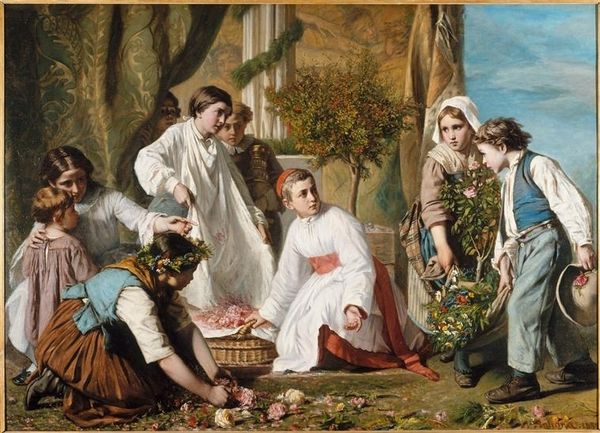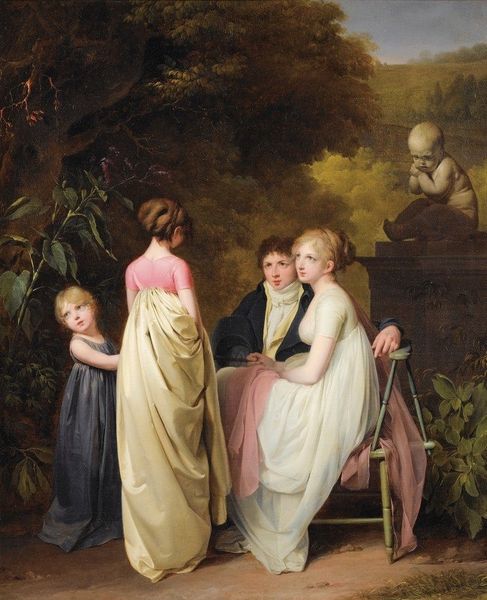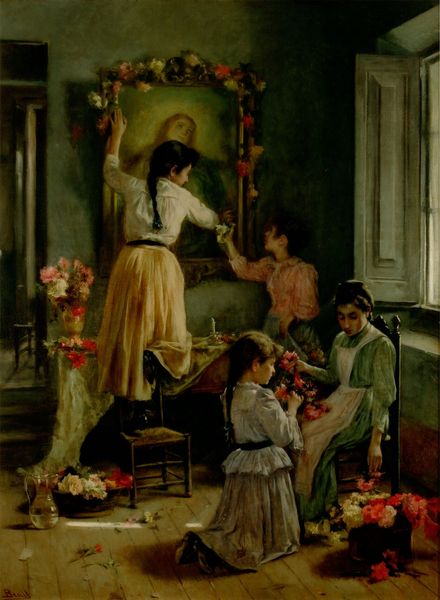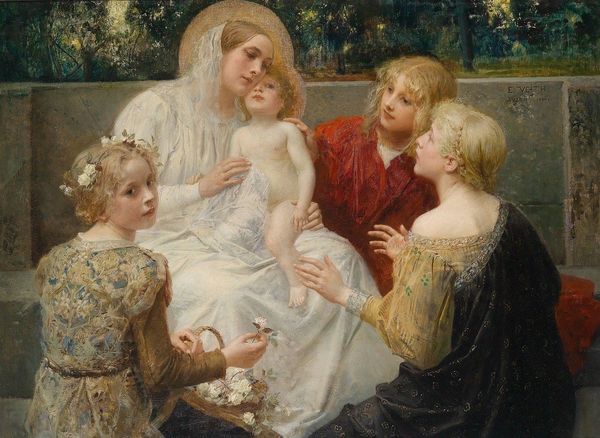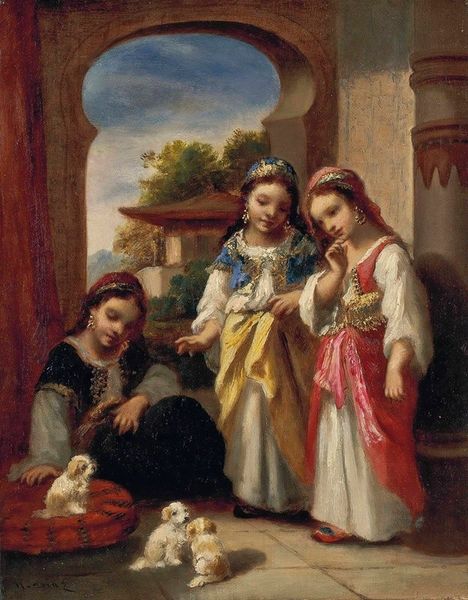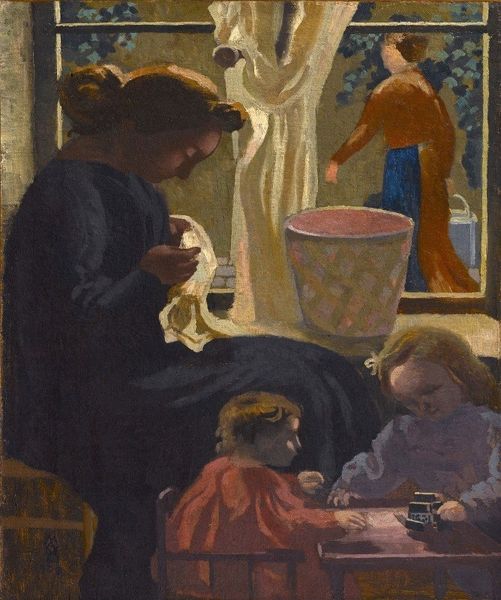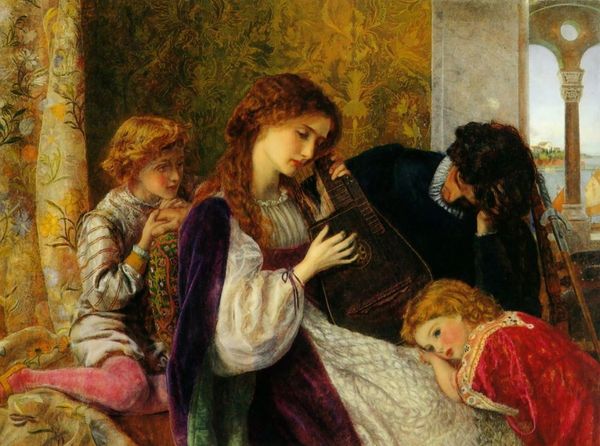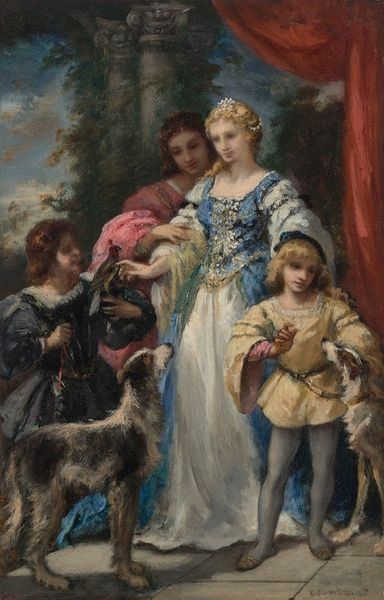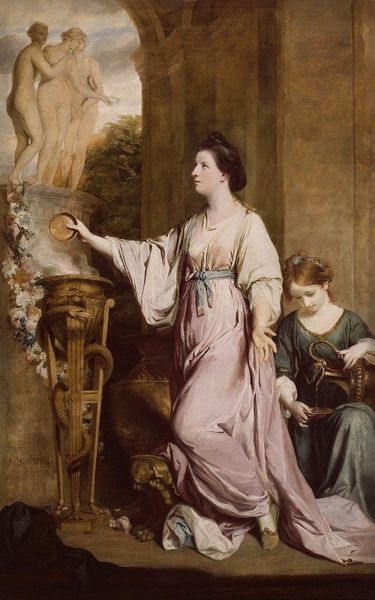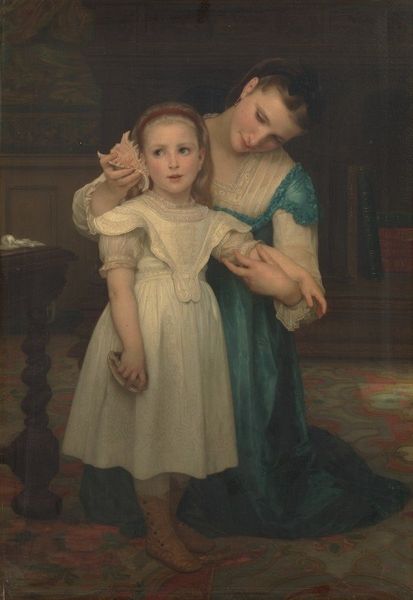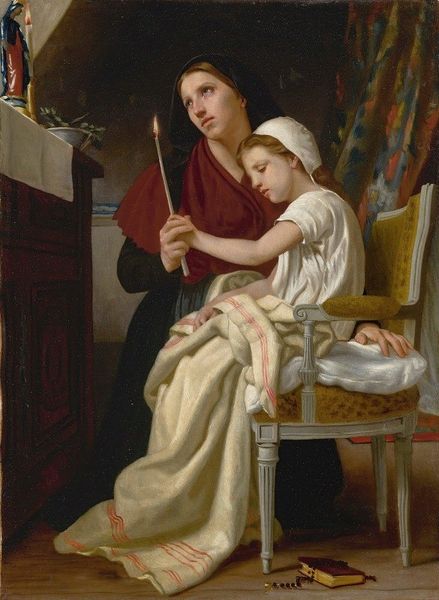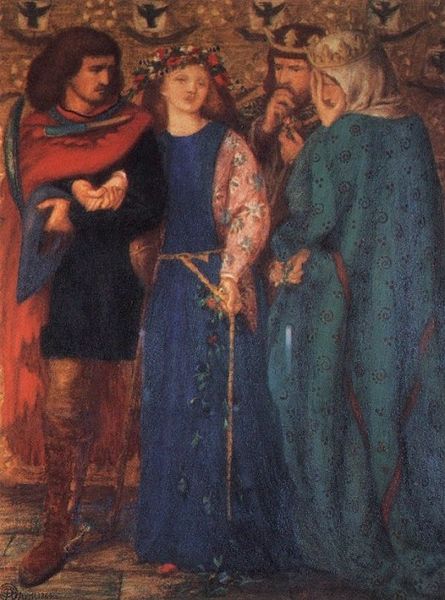
painting, oil-paint
#
portrait
#
gouache
#
painting
#
oil-paint
#
oil painting
#
romanticism
#
watercolour illustration
#
history-painting
#
academic-art
#
watercolor
#
realism
Copyright: Public Domain: Artvee
Curator: This is Paul Delaroche's painting "Sainte Amélie, Reine de Hongrie". It appears to be an oil painting. The precise date of its creation remains unknown. Editor: The first impression for me is one of serene devotion. The composition directs my eyes to the queen, bathed in this rather magnificent, shimmering golden fabric. Curator: Indeed. I'm drawn to the textures depicted: the smooth stone floor against the rich velvet cloak, the subtle variations in the gold weave, it is tempting to consider not just the final object but the material culture that informs the artist’s and, by extension, the patrons world view. What sort of craftmanship and industrial process did it take to produce those fabrics for a Queen? The painting immortalizes the labor that surrounds such personage. Editor: I'd agree—however, even disregarding the socio-economic commentary implied, the texture itself is the core to understanding the symbolic message behind the painting. The artist is using textures to convey a clear visual hierarchy, inviting us to focus on her. Notice how light reflects and refracts so vividly on the golden gown, immediately establishing her elevated status within the piece. Curator: Speaking of her attire, observe how that cloak drapes. Delaroche's detailed treatment isn’t merely about aesthetic refinement. How the clothes literally “make the woman,” or in this case, a “Queen”. The materiality signifies status. I see academic-art traditions serving the creation of specific identities within rigid social stratification. Editor: Yes, it serves to contrast—her contemplative gaze—away from all of those luxurious accessories is telling! Delaroche clearly wants to portray the dichotomy between outward appearances and internal spirituality. Her introspective face provides insight into something intangible within the Queen, that which no amount of textile craft could ever replicate or diminish. Curator: Do you also notice that modest plant placed on the small table in front of the main subject? That is far more than decoration. The plant represents not only God’s creation on Earth, but the raw and renewable materiality that royalty depended on! The natural world undergirds the artificial and the constructed here. Editor: Interesting take! But to me the whole plant element—the colors, the location— it works more on a compositional, visual level than anything else. Green sets off that golden robe to stunning effect—drawing together Earthly concerns with otherworldly presence… Curator: Well, thinking about our brief analysis and impressions, it feels like Delaroche certainly provides a rich ground for interpreting class, economy, and also craftmanship! Editor: It is a successful interplay between structure, message, and materiality for sure. The play between devotional solemnity, and color itself, certainly stands out in my view!
Comments
No comments
Be the first to comment and join the conversation on the ultimate creative platform.
